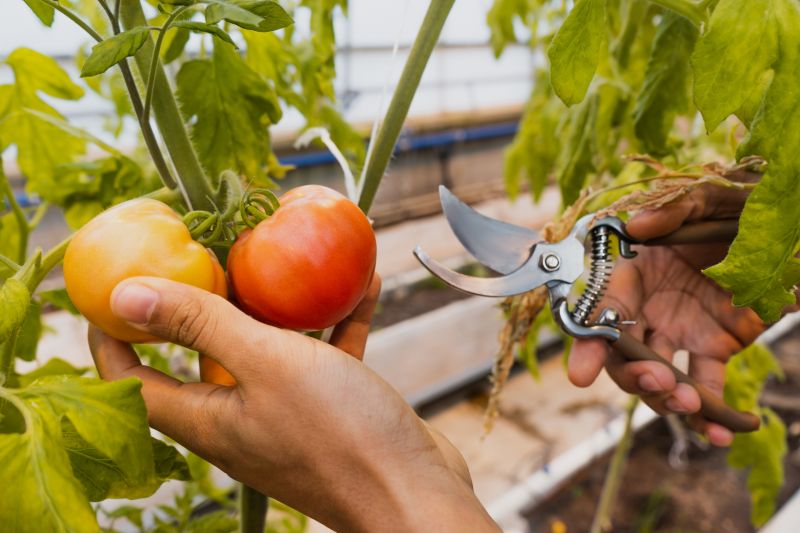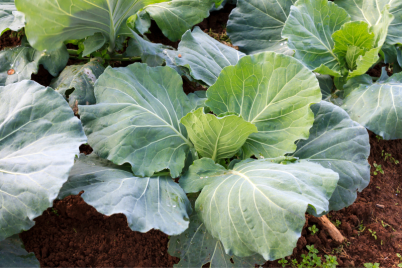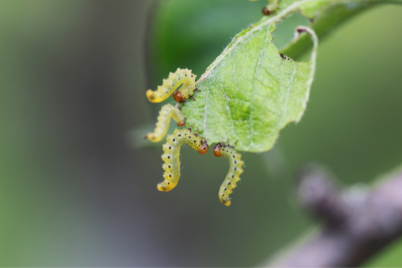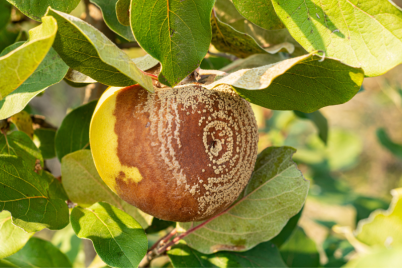There are three basic types of tomatoes, but the varieties within those types are endless.
BY JOYCE WOODSON, Garden Enthusiast
What’s all the hype about tomatoes? Just that there is no better fruit than a juicy, vine-ripened homegrown tomato!
I have 30 tomato plants this year, 12 different varieties, all grown from seed. Yes, that’s a lot, but we eat them raw, cook with them and share with family and neighbors. There are never enough tomatoes.
Home gardeners are generally limited to tomato plants available from nurseries and garden centers. Available varieties have expanded over the years, but there are so many more interesting types to grow if you start with seeds. Seed catalogs are filled with pages of tomatoes in all shapes, sizes, and colors. Tomatoes are easy to grow from seed; our long growing season makes that more realistic.
There are three basic types of tomatoes, but the varieties within those types are endless.
Cherry types: Cherry refers to the size of this type of tomato: small, round or tear-drop shaped, and usually very sweet. Cherry tomatoes are less likely to disappoint home gardeners. They are prolific and produce a lot of fruit over a long season.
Roma types: Tomato sauces are made with this type. These dense fruits have little water, so they hold up well to cooking or pizza. It’s not unusual to produce 15 or more on one vine over the growing season.
Globe types: Round or deeply lobed globes are the most common tomato grown in the home garden and the most available at garden centers.
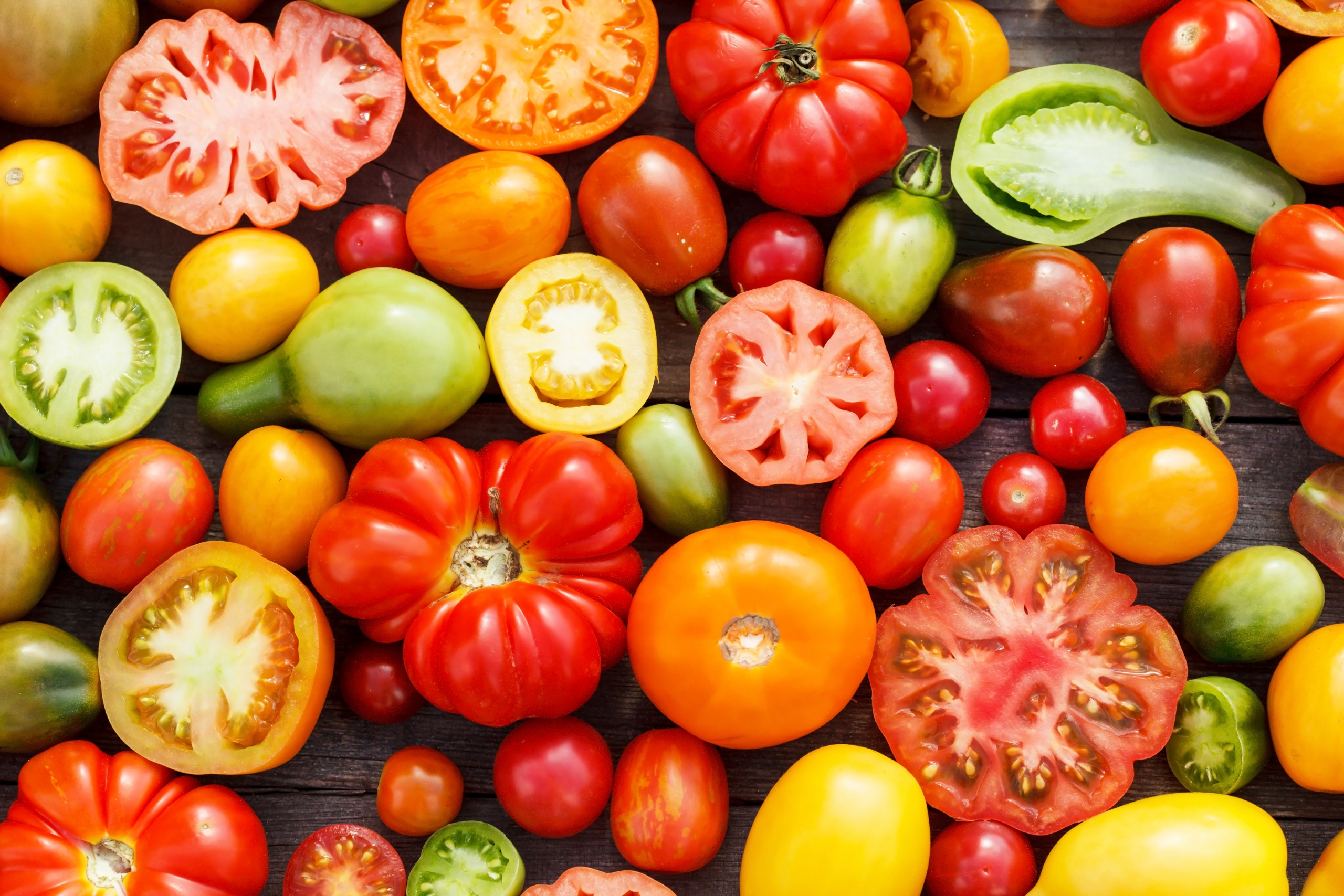
Classic red is the most common, but tomatoes can be yellow, green, pink, purple, blue, nearly black, orange, and brown, as well as spotted and striped.
Tomatoes are either determinate or indeterminate. Determinate varieties produce fruit at the same time. Market growers often select determinate tomatoes because they are more predictable.
Indeterminate varieties produce over a long period on a continuously growing vine. Indeterminant tomatoes are usually staked to keep the fruit off the ground. Most gardeners prefer indeterminant, so they have a regular supply of tomatoes all season.
In addition to different types and growth patterns, colors can vary widely. Classic red is most common, but tomatoes can be yellow, green, pink, purple, blue, nearly black, orange, and brown, as well as spotted and striped. They can also have a broad mix of colors on one fruit. Yellow and orange varieties tend to be less acidic, while the darker-skinned varieties have more antioxidants. I grow a green tomato with yellow stripes called “Green Zebra.”
Size is also a consideration: large tomatoes produce far fewer fruit per plant. “Beefsteak,” for example, can be the size of a large grapefruit and weigh more than two pounds, while “Everglades” are as small as currants. Beefsteak will not produce a vine full of giant tomatoes, but cherry and many globe types will produce a vast amount of fruit all season.
With so many choices, deciding which type to grow can be challenging. Texture, sweetness, tartness, acidity and use should determine the type of tomato you should grow. For example, if you want tomatoes for sandwiches or salads, you would select a standard globe with a firm texture. If you are canning, you might want a less acidic globe variety.
Sauce tomatoes, canned or used fresh, should be Roma, but adding tomatoes to a stir-fry or soup can be any type, including cherries. Cherries are best for snacking or vegetable party platters, and I highly recommend “Sun Gold” and “Black Cherry” for this purpose. Warning: these are so delicious they may never make it into your kitchen.
Heirloom tomatoes are as they were grown years ago. This is the tomato flavor you remember from your grandmother’s garden. Hybrids are a better choice for new gardeners, though. Many tomato “issues,” like cracking skin, are bred out while disease resistance is bred in.
I grow a lot of tomatoes because we love them, but also because squirrels, Insects and disease always cost me fruit and, in some cases, the entire plant. There is good news: squirrels will not bite and discard all of your fruit, and most tomatoes produce well before succumbing to insects or disease.
Tomatoes are subject to some of the same diseases as other vegetables: bacterial disease and fungus, which are both treatable, and viral diseases which will kill the plant. Our humid, windy climate is perfect for spreading disease, so be sure to follow sound disease prevention practices:
1) Keep the garden clean by removing dead plant parts and weeds where disease and bugs can flourish. 2) Don’t crowd vegetables; crowding supports the spread of disease.
3) Inspect the garden daily for insects and disease.
4) Treat or remove insects and remove diseased plant parts or entire plants if necessary.
5) Water the soil and not the plants to avoid fungus growth.
6) Don’t grow the same plants in the same location year after year, as some diseases can build up in organic matter.
HINT: It’s a good idea to have organic insect and disease treatments available BEFORE you need them.
 Real estate agent Joyce Woodson loves gardening and sharing what she knows. The founder of “Straw Hat Gardening,” she has taught classes on basic organic gardening and provided garden consultations. To reach Joyce, email gardening@joycewoodson.net.
Real estate agent Joyce Woodson loves gardening and sharing what she knows. The founder of “Straw Hat Gardening,” she has taught classes on basic organic gardening and provided garden consultations. To reach Joyce, email gardening@joycewoodson.net.

